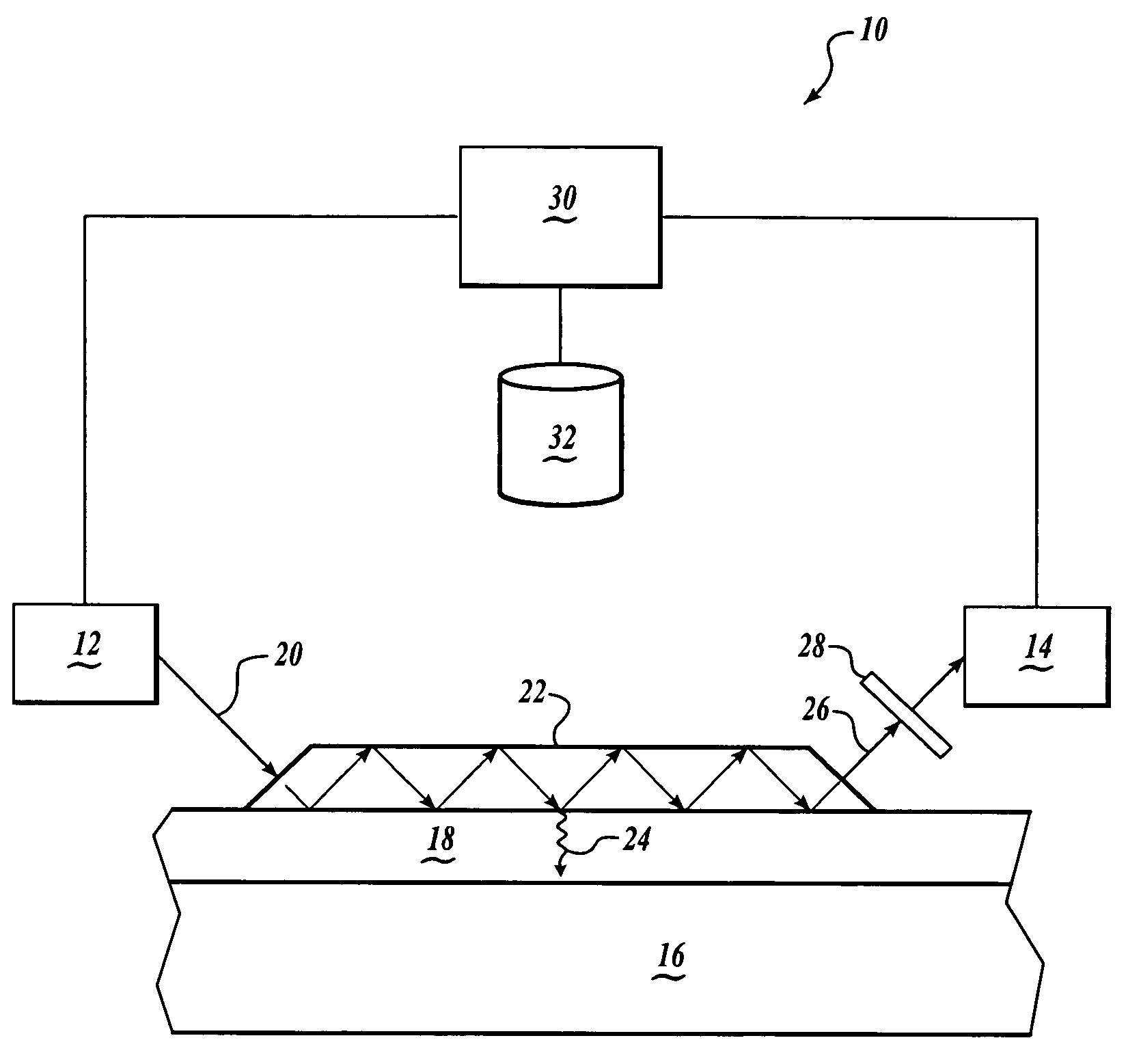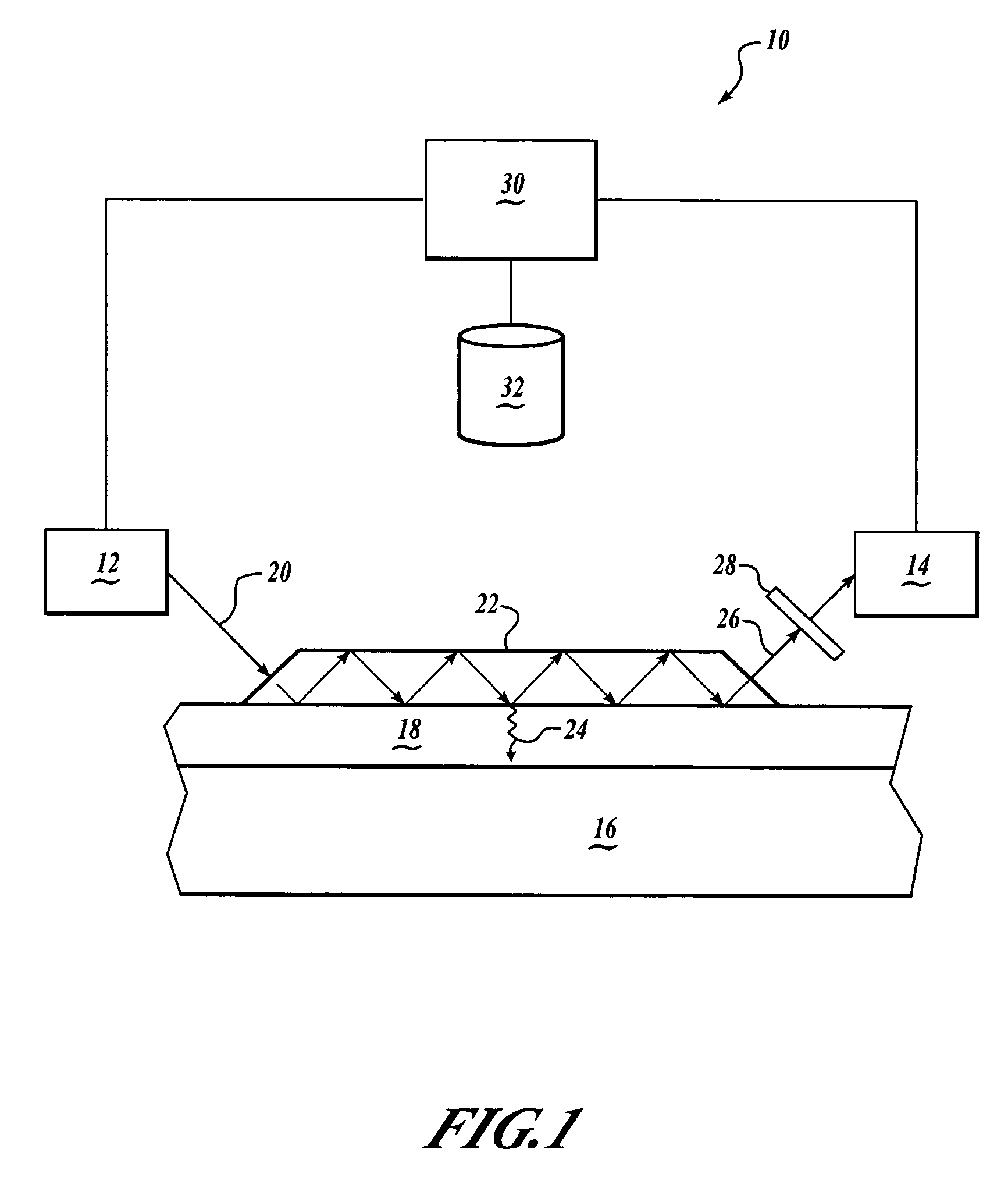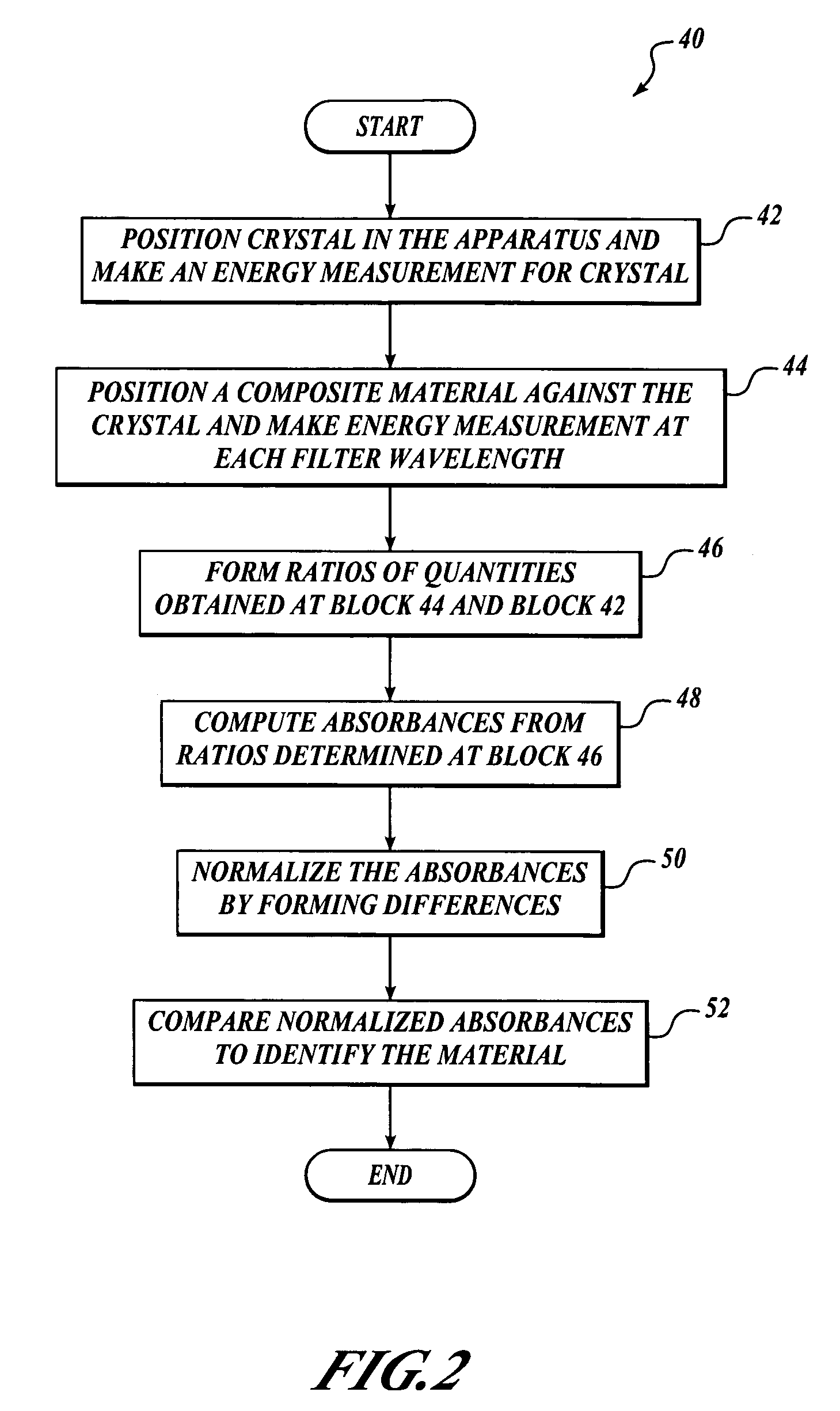Apparatus and methods of determining chemical properties of a resin-based material using infrared absorbance
a resin-based material and chemical property technology, applied in the field of composite materials, can solve the problems of excessive brittleness of materials, insufficient rigidity of molded components, and the need to determine various properties of molded components
- Summary
- Abstract
- Description
- Claims
- Application Information
AI Technical Summary
Benefits of technology
Problems solved by technology
Method used
Image
Examples
Embodiment Construction
[0011]The present invention relates to apparatus and methods for determining chemical properties in a composite material using infrared absorbance. Many specific details of certain embodiments of the invention are set forth in the following description and in FIGS. 1 through 3 to provide a thorough understanding of such embodiments. One skilled in the art, however, will understand that the present invention may have additional embodiments, or that the present invention may be practiced without several of the details described in the following description.
[0012]FIG. 1 is a diagrammatic view of an apparatus 10 to determine the chemical properties of a composite material, according to an embodiment of the invention. Briefly and in general terms, the apparatus 10 permits selected chemical properties of a material to be determined nondestructively by measuring the infrared absorbance of the material at specified wavelengths. Accordingly, in one particular embodiment, the apparatus 10 inc...
PUM
 Login to View More
Login to View More Abstract
Description
Claims
Application Information
 Login to View More
Login to View More - R&D
- Intellectual Property
- Life Sciences
- Materials
- Tech Scout
- Unparalleled Data Quality
- Higher Quality Content
- 60% Fewer Hallucinations
Browse by: Latest US Patents, China's latest patents, Technical Efficacy Thesaurus, Application Domain, Technology Topic, Popular Technical Reports.
© 2025 PatSnap. All rights reserved.Legal|Privacy policy|Modern Slavery Act Transparency Statement|Sitemap|About US| Contact US: help@patsnap.com



